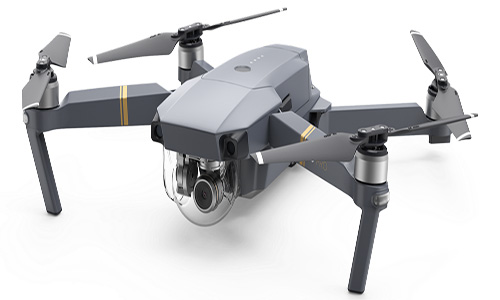
In News
National Counter Rogue Drone Guidelines to counter rogue drones have been finalised by the government.
In-Detail
- The guidelines are laid down with an aim to counter drones that fly over restricted areas and areas of sensitivity.
- The measures in the guidelines include the deployment of anti-drone tech (Counter-Unmanned AircraftSystem (C-UAS)) at installations that have a threat from UAVs.
- Ministry of Civil Aviation has finalised the guidelines that suggested a counter-rogue drone deployment plan, categorised across three levels, based on the sensitivity of vital assets and installations.
Why the Guidelines?
- The Directorate General of Civil Aviation (DGCA) has issued No permission, No takeoff (NPNT) regulations for drones that have a built-in prescribed firewall.
- But the regulations will be applicable only on those drones that are manufactured now.
- What about those that are manufactured before the regulations? As per government estimates, there are over half a million drones without the prescribed firewall and they all pose a security threat.
- Hence the need for anti-drone guidelines.
Security Assessment
- As strategic installations differ from state to state, geographical regions, their type, criticality and construction, it is the duty of the Ministry of Home Affairs and State Home departments to assess the security threat with the help of specialised organisations and deploy C-UAS projection accordingly.
Three Models
- The guidelines suggest three models for deploying C-UAS.
- In the full-scale model, vital assets of critical importance will be protected. These include Rashtrapathi Bhawan, Parliament, Nuclear installations, major airports, etc.
- The mid-segment model is for installations like metro airports, ports, oil refineries, and power plants.
- The basic model is for state secretaries, important official premises, monuments of national importance, etc.
Deployment Scenario
- In the full-scale model, the C-UAS protection consists of primary and passive detection means like radars, radio frequency detectors, electro-optical, and infrared cameras.
- It also includes soft kill and hard kill measures like RF jammers, GPS spoofers, lasers and drone catching nets.
- In the mid-segment and basic models, the guidelines suggested a lower level of threat mitigation measures.
Legal Procedures
- Apart from the counter-rogue plan, the Civil Aviation Ministry has also suggested some legal measures to handle rogue drones.
- According to the Ministry, it is essential that legal provisions are put in place for using signal jamming devices for RF, GPS jamming and seizing of aircraft, advanced interception method through kinetic or non-kinetic means by the law enforcement agency or other competent agencies.
- Legal provisions will ensure that C-UAS will be deployed based on the risk assessed and coordinated closely among relevant departments and agencies to mitigate adverse impacts to the safety, efficiency and accessibility to the Indian airspace to the maximum extent feasible,
- The Ministry suggested a legal framework to be prepared for authorised use of C-UAS by various agencies for safeguarding manned aviation, protecting national borders, supporting law enforcement agencies and conducting operations.
Conclusion
The need for counter-rogue drone guidelines came amid many security incidents related to drones across the world including India. There were incidents of drones coming in close contact with commercial airlines, hovered near international airports like New Delhi and Mumbai. Also, a drone was used in an attempt to assassinate the President of Venezuela recently.
Moreover, the recent news of drones flying over commercial establishments like oil refineries near the border with Pakistan makes the guidelines important.

Leave a Reply
You must be logged in to post a comment.